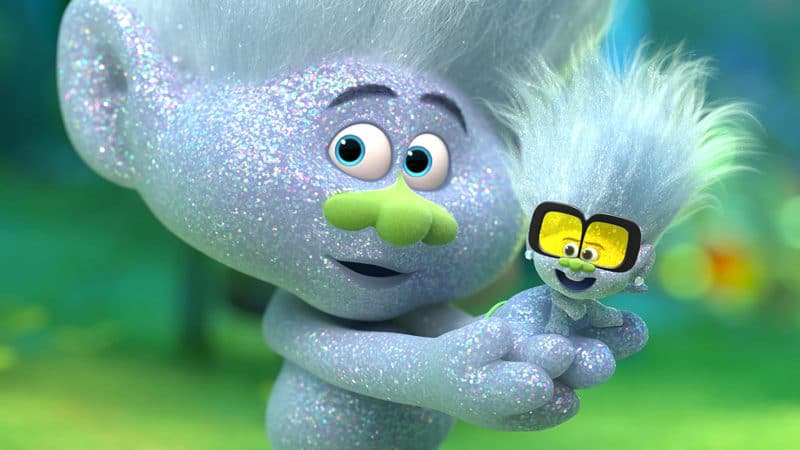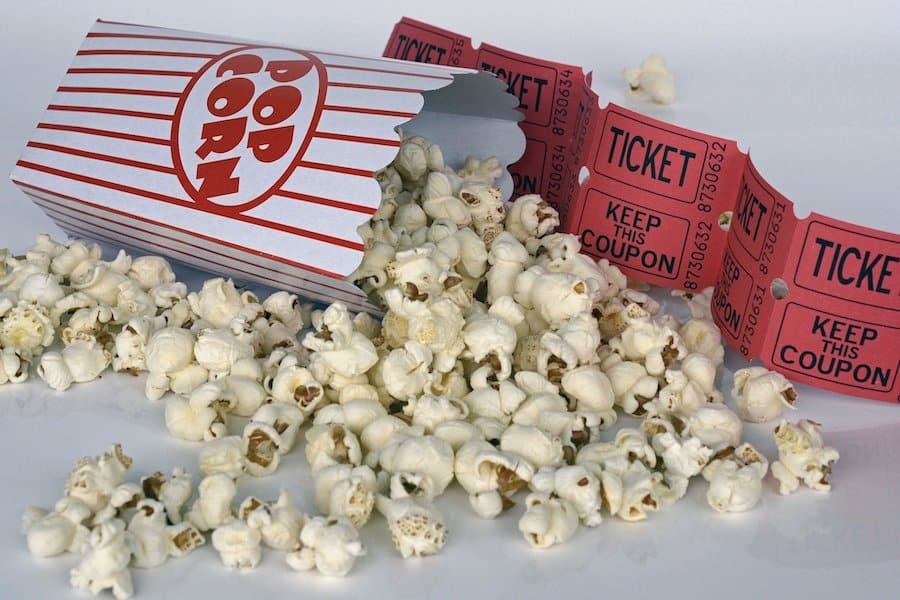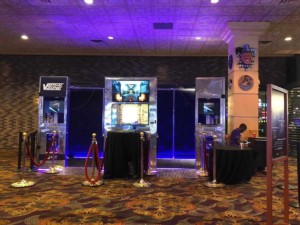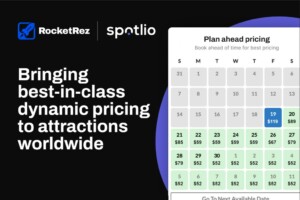Location-based virtual reality has been particularly hard hit by the coronavirus, but it’s not the only entertainment business that’s been gutted by the lockdown. COVID-19 might spell the end of the movie theatre as we know it.
By Bob Cooney
I’ve been reflecting on the impact on the entire entertainment industry because part of my job is to predict the future. I work with companies on emergent strategy which requires me to seek patterns. In the current environment, new patterns seem to be emerging daily. So, it’s giving me lots of think about.
Theme parks, family entertainment centres, and movie theatres have been shuttered around the globe. Most people assume that when this is over, whatever that might mean, these businesses will open, and we will get back to some sense of normal.
I think it’s fairly safe to assume that theme parks will survive. Because they offer something that just cannot be done at home. No matter how good virtual reality technology gets, we will never have a roller coaster in our living room.
And family entertainment centres, though they might evolve into something different, will also come back into fashion. People will be craving physically social experiences more than ever.
Movie theatres, on the other hand, are looking more like an endangered species thanks to COVID-19.
Does COVID-19 spell the end of the traditional movie theatre?
Movies are a shared, not social, experience. Before every movie in a theatre, we are warned to be quiet, turn off our phones, and not create distractions for other viewers. This is the antithesis of social behaviour.
Theatre owners are explicit about the power of the shared experience as a reason why people go to movies. Today, however, we are learning new methods of sharing from home every day. For example, Netflix Party, a chrome browser extension that lets friends watch Netflix movies together.
How long will it be before Netflix itself creates a social feature so people can create viewing parties from within the app on any device? Facebook already has that feature for any public video on their social network.
Studios, in a bid to save their investments in productions that launched as the COVID-19 outbreak was starting, shortened the exclusive movie theatre release window and rushed major films like Birds of Prey and Bloodshoot to premium video on demand (PVOD). The $20-30 rental fees for a few days of viewing generated extra cash for studios that were suddenly bleeding.
Premium video on demand
Two weeks ago Universal Studios released Trolls: World Tour direct to PVOD with no theatrical release at all since the theatres were all closed. Universal reports that it generated the biggest digital debut ever, 10X bigger than Jurassic World: Fallen Kingdom, the next traditional digital release.

FandangoNow reports it’s their biggest pre-order title ever and it was the number one release on every digital platform that weekend.
This week, Warner Bros. decided to follow with their announcement that Scoob!, the Scooby-Doo animated feature, will go straight to PVOD for a 48-hour rental on May 15th for $19.99. Warner chairman and co-CEO Ann Sarnoff said “We know fans are eager to see Scoob! and we’re delighted we can deliver this feel-good movie for families to enjoy while they’re home together.”
Sarnoff’s positioning that this is all about the families stuck at home is heartwarming. Theatre owners, studios and most industry pundits maintain this is a temporary measure, and that when theatres open again after the COVID-19 pandemic, they will go back exclusive debuts.
They maintain there is no precedent for digital releases coming anywhere near the billion-dollar theatrical hauls of movies like Star Wars or Avengers.
But there’s no precedent for much of what’s happening in the world now. According to Indiewire, multiple sources confirm Trolls took in over $50 million domestically in its first six days, and that foreign markets are doing well also. They go on to frame this success in that there was a big marketing budget, and kids are locked up at home, and the cost of the PPV for a family of 3 or 4 was cheaper than a trip to the theatre. All true.
COVID-19 and the existential threat to movie theatres
Also true is that there’s been a love/hate relationship between studios and theatres for years. In 2017 Disney began to exert their box office dominance and demanded up to 70% of ticket sales of The Last Jedi, leaving theatre owners concerned about the future.
Theatres have felt this existential threat before. First, it was cable, then DVD and Blu-ray, and most recently by Netflix. But the promise of huge box office revenue kept the studios in line. Now with box offices closed for a while, they’re free to play with various pay per view models to see if they can maximize revenue.
Analysts claim that PVOD won’t ever generate what a blockbuster theatrical release can. But we just have to look to the sporting world to realize that’s not true. Boxing, UFC and WrestleMania have been generating eight and nine-figure PPV tallies since the 1980s. The recent Floyd Mayweather versus Conor McGregor boxing match generated $500 million in revenue at $100 per buy in a single day.
Most people wait until the event is shown a week or more later on a subscription platform. For instance, ESPN, HBO or Showtime. But sports are better live because the drama feels more real. In a world of constant media bombardment, it’s difficult to stay away from results that would ruin the viewing experience.
Opening nights and blockbuster releases
How many people might pay $100 on the opening night of a Star Wars movie? Globally, it’s not hard to imagine a few million people hosting viewing parties and splitting the cost among friends. And if the price dropped to $50 the next day for the rest of the weekend, how many more would jump in?
There could be matinee pricing, weeknight pricing, and even potentially variable pricing based upon how many people are watching as smart televisions with cameras start shipping to enable more video conferencing and watch party capabilities.
The model already exists for the first $1 billion PVOD release. Studios have announced release dates for potential tentpoles in the second half of 2020.
Pixar’s animated jazz odyssey, Soul, is set for June 19, which is decidedly optimistic. If they try to push it back further, they will struggle to find slots should theatres reopen later this year. Could this be the film that Disney uses to test PVOD? It almost looks as though they’re setting up for just that.
Disney named July 24 for its live-action version of Mulan. With China possibly coming back online first after COVID-19, this movie could release there exclusively in theatres, and simultaneously on PVOD and in theatres domestically, since states will be coming back on at different times in the US.
Wonder Woman 84 has been pushed back to August. Other potential blockbusters, such as James Bond’s No Time to Die, Marvel’s Black Widow and Top Gun: Maverick will come out in November and December, giving theatres more time to recover. The studios will all be experimenting along the way to determine how to maximize their return on production investments.
Movie attendance
The long-term trend of movie attendance has been negative for two decades. People were going to fewer movies every year. The pandemic accelerated what was a natural trend towards in-home viewing. Ultimately the consumer demand will determine how this plays out, and trends suggest viewing at home is what people want.
This will all accelerate the move to premium experiences in theatres. VIP dining and motion 4DX lend themselves well to social distancing layouts. They also support higher price points that will be needed to offset the lack of attendance. But how many premium theatres can a market support?
The thought of the movie theatre’s extinction fills me with sorrow. We go to theatres to escape and to seek comfort. Curling up in an auditorium with a bucket of buttery popcorn and our favourite candy, having the lights dim, and the curtain pull back, fills us with a sense of anticipation that soon is replaced with the excitement of the opening credits.
The real-world fades away and we spend the next two hours lost in a fantasy. All thoughts of the horror of the real world dissipate.
HP Lovecraft wrote, “The oldest and strongest emotion of mankind is fear, and the oldest and strongest kind of fear is fear of the unknown.”
We have entered a time of the infinite unknown. There is no way of knowing what comes next. At times like these, we need comfort more than ever. For now, at least, many of those comforts have been stripped away. And some of them might never come back.










